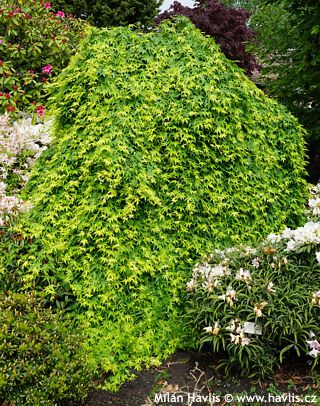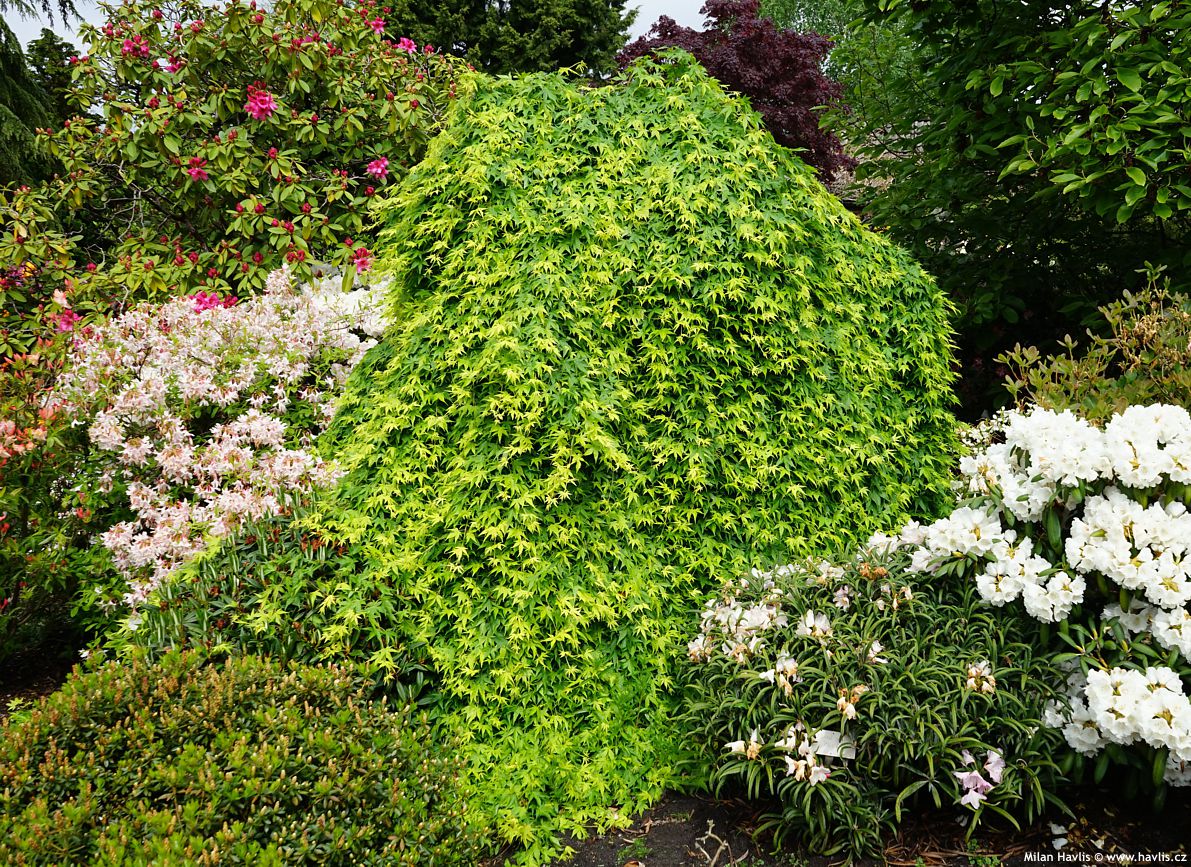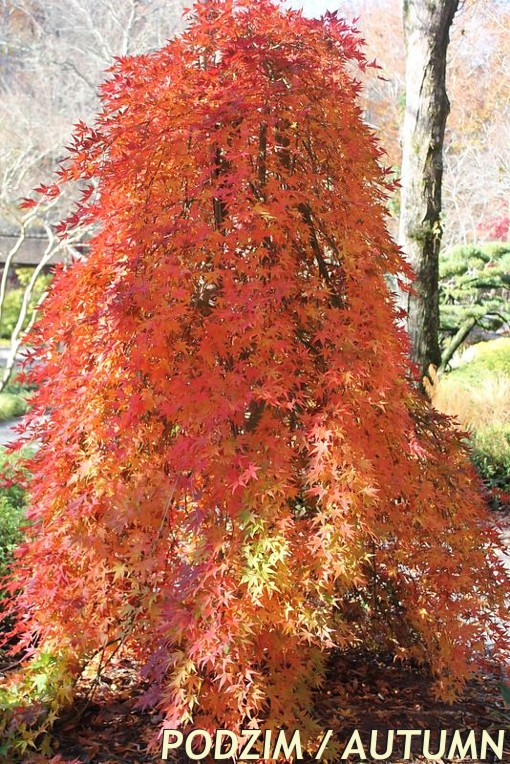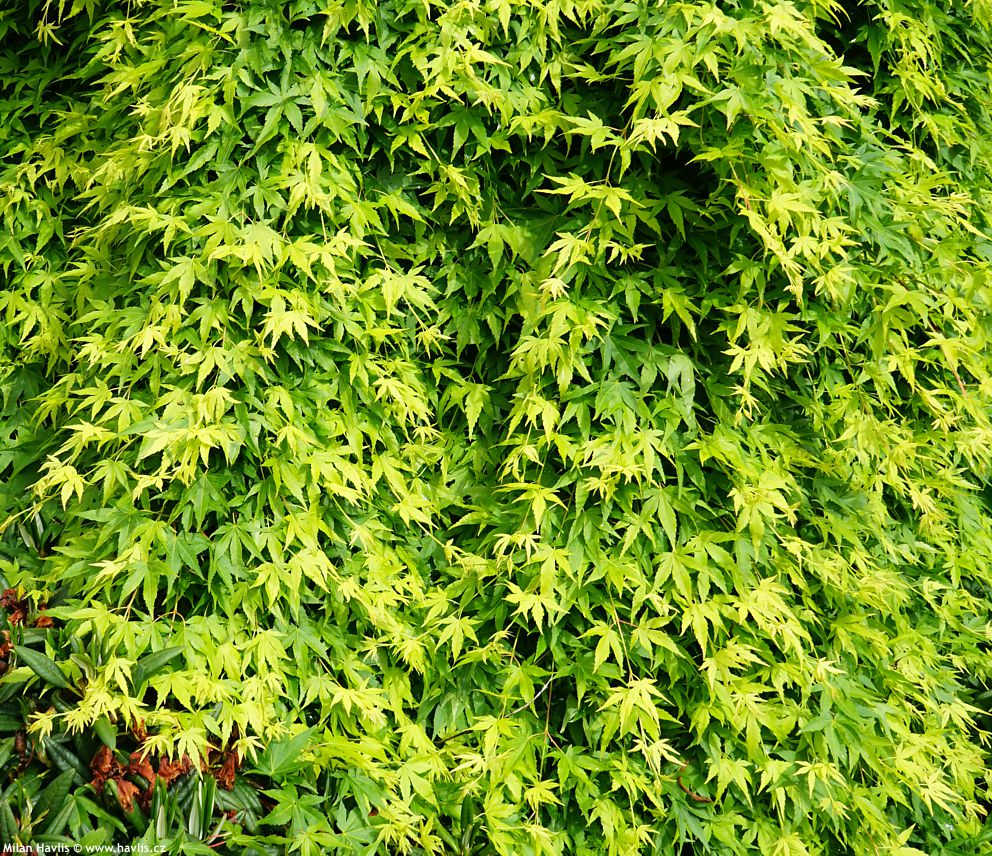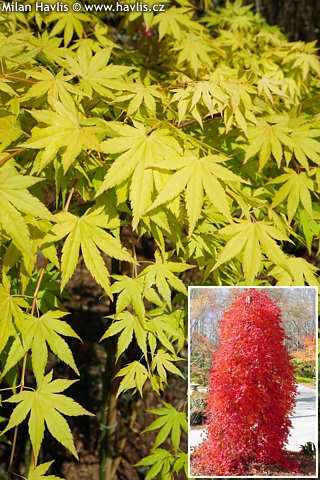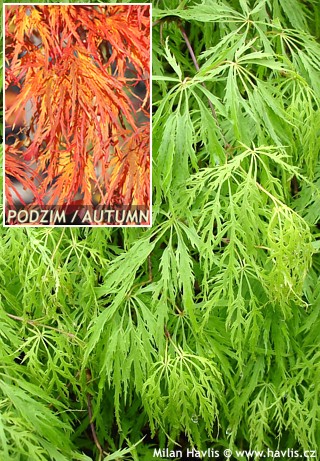Acer palmatum 'RYUSEN' (syn. 'RYUSEI') Japanese maple
size/type
small tree,weeping/cascading
usual height
0,5-2m
usual width
1-1,3m
leaves
deciduous broadleaf
colour of leaves
flowers
insignificant or non-blooming
location
full to partial sun
soil type
acidic (peaty)
soil moisture requirements
evenly moist (dislikes drought)
USDA zone (lowest)
5 (down to -29°C)
winter protection
for zone 5+6

for zone 7

categorized
Acer
Japanese maples are very decorative and usually low shrubs, occasionally small trees, with attractive foliage and picturesque structure. There are many varieties in various shades of green, chartreuse, golden and yellow, red to maroon, and even multicoloured (variegated). They originate from Asia (Japan, China, Korea), where they have been cultivated for at least two centuries or perhaps even longer, however, they were introduced to Europe only at the beginning of the 19th century, specifically to Great Britain in 1820. Interestingly, the botanist Carl Peter Thunberg described them much earlier, in 1784, because he undertook an expedition to Japan in 1775-1776, discovering new species and collecting seeds and plants. He named the tree Acer palmatum, referring to the leaf shape resembling a human hand with fingers, although it is said that they first reminded him of frog fingers, which is also one of its oldest Japanese names: kaede. The other is momiji (baby hands). The beauty of the colours and shapes of the leaves and trees is reflected in many arts, for example, in the oldest preserved collection of Japanese poetry from the 8th century, the Man'yōshū (Collection of Ten Thousand Leaves). The Chinese poet Wang Wei (699-759) celebrated their beauty in many of his works, and naturally, maples often appeared in ancient paintings, tapestries, porcelain, and wherever classic and traditional decorations associated with the symbolism of these maples were desired: beauty and elegance, serenity, endurance, vitality, and transformation.Description of the plant:
Ryusen (or Ryusei) is a unique Japanese maple of strictly weeping habit with typical palmte, not dissected leaves. It was found as a natural mutation of one whole plant in Japanese maple nursery in Kawaguchi City in 1990. Its founder Kahuzara Kobayashi named it Ryusen (flowing or falling water) whereas its former provisional name, in my view a little more accurate, was Ryusei (falling star). The patent was issued in 2008 as PP18501.Leaves of Ryusen maple have 5 or 7 tips and really look like stars . They emerge bright green in spring and mature to medium green in summer. In autumn they turn rich shades of orange and fiery red. This maple variety is commonly grafted onto stems of various heights in order to achieve a tree-like appearance because once it reaches ground it creeps like a true groundcover which it is indeed.
Ryusen maple can take full sun all day long if sufficient irrigation is provided, and will also thrive in partial shade or in filterered sunlight. Grow it in semi-fertile, acidic to neutral, moist but well drained soil. Keep it mulched all year round and avoid growing grass above its roots. It will love a location with high air humidity, e.g. at a river bank or near a pond, but it is not a must. On the other hand it will definitely not be too happy in a small paved yard surrounded by dry air and hot concrete. Fully hardy to min. -29°C (USDA zone 5).
Last update 08-11-2016
QUICK PRICE OVERVIEW
CURRENTLY SOLD OUT












